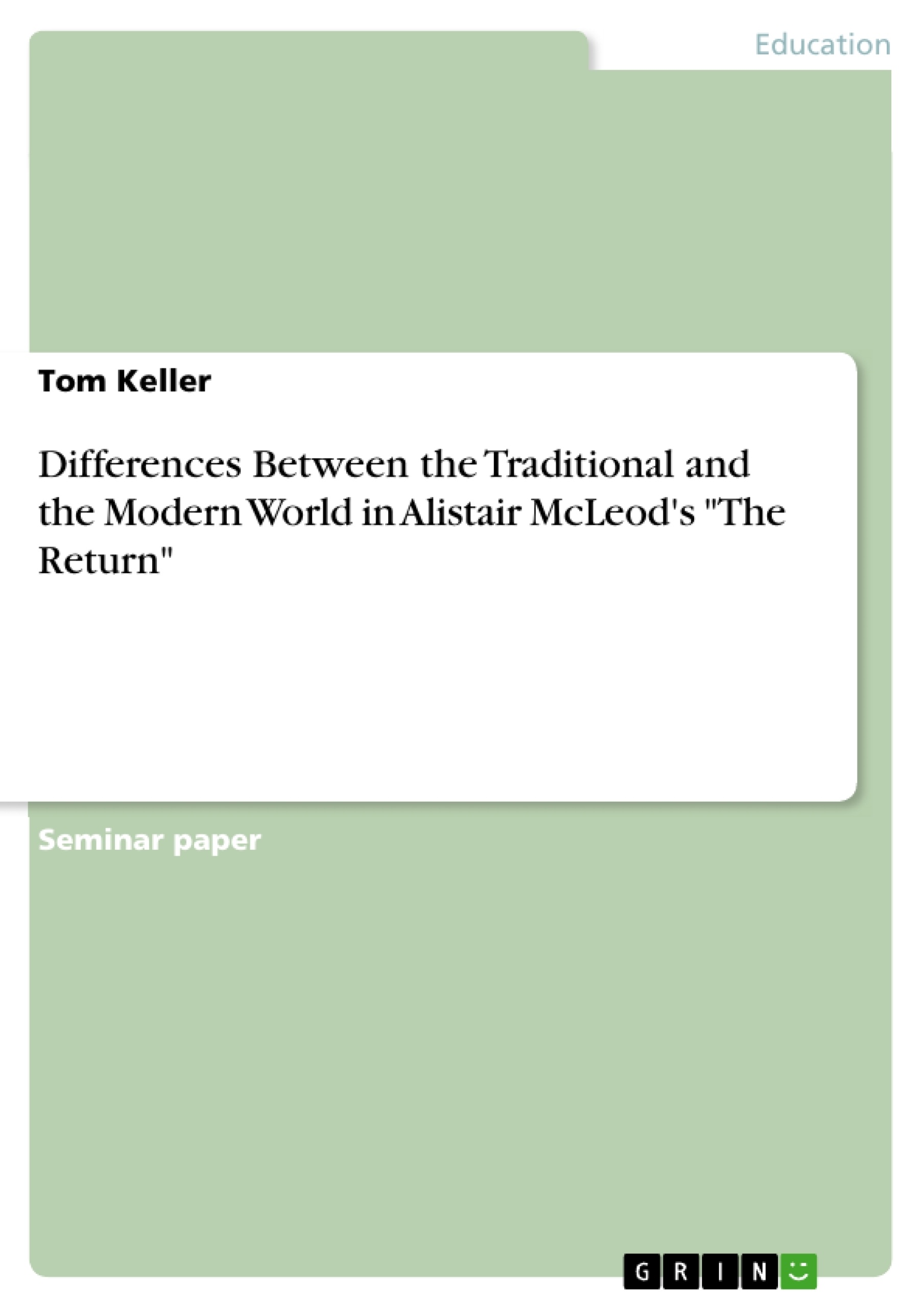Alistair MacLeod, born in 1935, is a famous Canadian short story writer, who published three short story compilations, a novel and an illustrated Christmas story. He spent most of his youth in the maritime province of Nova Scotia, which lies on the Atlantic coast of Canada. Putting all of his passion into his work as a writer, he created several short stories which take place in rural maritime areas he knows from his youth. All his stories deal with similar themes and characters, showing their lives, the hardship and their work circumstances as fishermen, farmers or miners, providing an insight of maritime life and culture. Nature, family tragedies and differences between traditional and modern lifestyles are also recurring themes.
Certain contrasts are especially obvious in the short story “The Return” from the short story collection “The Lost Salt Gift of Blood” published in 1976. The storyline is about the little boy Alex and his upper class family from Montreal, who make a journey to Cape Breton Island in Nova Scotia to visit relatives, and contains many examples about how the urban and rural areas differ. Narrated and perceived by Alex, whose father Angus has his roots on the island, this theme is dealt with in many cases. The contrast “[...] is not only limited to the Maritime culture [though]; it is something that can be universally understood” (Mallorylee 2008). It is the general way of life of the people which is so contrasting even though they live in the same country.
First of all, I am going to show the general characteristics of the two distinct worlds the protagonists live in. Afterwards, the focus lies on the several differences between the two worlds according to clothing, alcohol, gender roles, time, family structure and language. Analyzing the characters, I am going to point out certain characteristics, which show clearly, why the people belong to two contrastive worlds. Finally, I will conclude the analyzed contrasts and try to determine which world is the better one in the end.
Inhaltsverzeichnis (Table of Contents)
- Introduction
- Two Different Worlds
- Cultural Differences between the Worlds
- Differences between the Characters
- Mary:
- Angus:
- The two Grandfathers:
- Conclusion
Zielsetzung und Themenschwerpunkte (Objectives and Key Themes)
This analysis aims to explore the contrasting characteristics of two distinct worlds depicted in Alistair MacLeod's short story "The Return." It examines the differences between the urban environment of Montreal and the rural landscape of Cape Breton Island, highlighting the contrasting lifestyles, cultural values, and perspectives of the characters.
- Contrasting lifestyles and cultural values of urban and rural areas in Canada
- Impact of natural environment on the people and their lives
- Economic disparities and their influence on social conditions
- Traditional versus modern worldviews and their implications for identity
- Theme of family and the complexities of intergenerational relationships
Zusammenfassung der Kapitel (Chapter Summaries)
- Introduction: The introduction sets the context for the analysis by providing background information on Alistair MacLeod and his work, focusing on the themes and characters that are recurrent in his stories. It introduces "The Return" as a story that showcases the stark contrast between the urban and rural worlds.
- Two Different Worlds: This chapter delves into the physical differences between Montreal and Cape Breton Island. The author contrasts the dynamic urban landscape of Montreal with the peaceful, yet harsh, beauty of Cape Breton Island, emphasizing the different pace of life and the influence of nature on the people.
- Cultural Differences between the Worlds: This chapter explores the cultural differences between the two worlds, examining the contrasting dress, attitudes towards alcohol, gender roles, time, family structure, and language. It highlights the impact of poverty and economic disparity on the lives of the people in Cape Breton Island.
Schlüsselwörter (Keywords)
The primary keywords and focus topics of this text include: rural vs. urban, Canadian literature, Alistair MacLeod, The Return, Cape Breton Island, Nova Scotia, Montreal, traditional vs. modern, cultural differences, family, identity, natural environment, economic disparity, social conditions, contrasting lifestyles.
- Citar trabajo
- Tom Keller (Autor), 2011, Differences Between the Traditional and the Modern World in Alistair McLeod's "The Return", Múnich, GRIN Verlag, https://www.grin.com/document/319477



